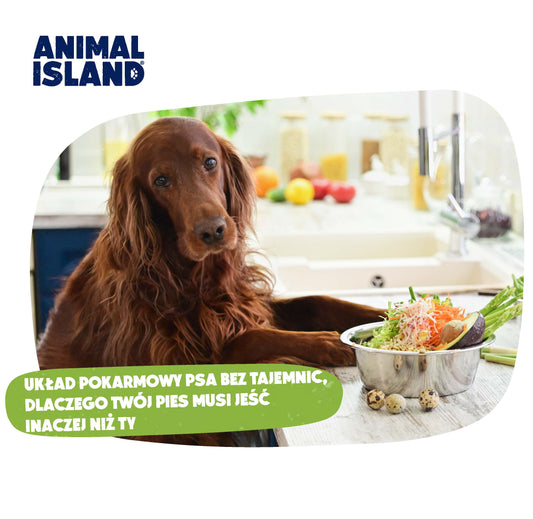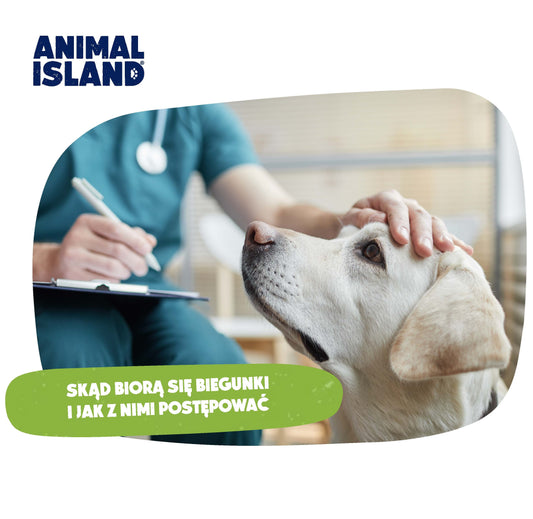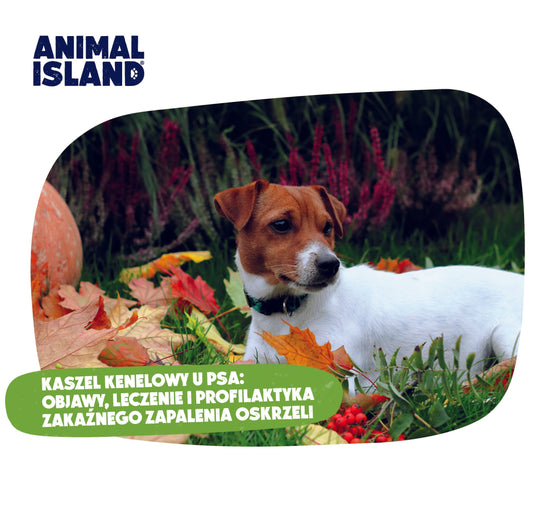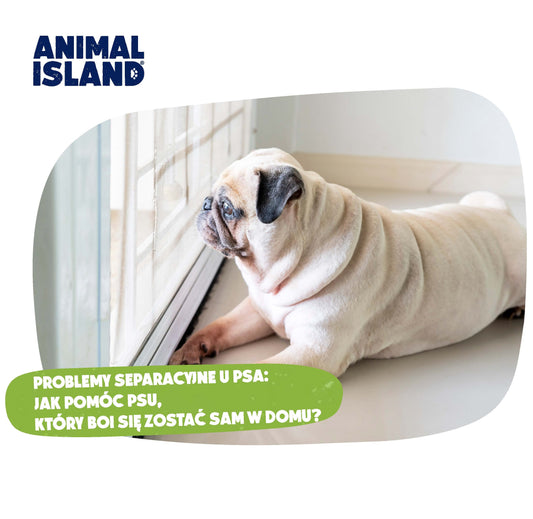DOG DOESN'T WANT TO EAT DRY FOOD - WHAT TO DO?

Love for a dog is expressed in many ways - one of them is caring for his healthy, daily meals. If your dog turns up his nose at the crisps in his bowl, you are not alone. Many owners face this challenge - full of questions, anxiety and sometimes frustration.
There can be many reasons for this behavior – from health issues, through individual taste preferences, to habits or changes in the environment. Understanding why your dog won't eat dry food is the first step to finding the best solution tailored to his needs.
In this article, with full understanding and respect for your shared history, we will suggest:
- at what may be behind the refusal to eat dry food,
- at how to gently and effectively encourage your dog to eat,
- at and how to improve your pet's diet so that it is not only healthy, but also tasty.
Because every dog deserves meals that will not only nourish their body, but also bring them joy. And you – as a Guardian – deserve to feel like you are doing the best for your friend.
MAIN REASONS FOR AVOIDANCE OF DRY FOOD
When a dog turns away from a bowl of dry food, concern, questions, and sometimes even a sense of guilt appear in the heart of every loving Guardian. "Did I do something wrong?", "Is he sick?", "Maybe he doesn't like this food?". These are completely natural reactions - after all, for us humans, the sight of a dog eating with appetite is proof of his well-being and health.
If your dog is not eating dry food , it is important to look at the situation calmly. It does not always mean something serious, but it is worth looking at several possible causes - both health and behavioral.
Dog health problems
One of the most common reasons why a dog suddenly stops eating dry food may be health problems . Although often subtle and difficult to notice at first glance, they can significantly affect your pet's appetite.
- Tooth or gum pain – tartar, inflammation, a broken tooth or hypersensitivity can make chewing hard granules simply painful for your dog.
- Digestive problems – flatulence, indigestion, reflux or gastritis can cause your dog to avoid food, especially dry food, which stays in the stomach for longer.
- Chronic illnesses , such as kidney, liver or digestive system disease, often affect appetite. In this case, the dog may become picky or avoid food altogether.
- Neurological or hormonal changes – age-related disorders, such as senile dementia, may affect eating behavior.
If your dog refuses to eat for more than 24 hours or if it is accompanied by other symptoms (lethargy, salivation, vomiting, diarrhea), you should definitely contact your veterinarian. Careful observation and quick action can make a huge difference.
Taste and behavioral preferences
Not all causes have to be health related, however. Dogs, like people, have their own tastes and habits that influence their food choices.
- Wet Food Preference – A dog that was used to wet food or home-cooked food may simply find dry food less appealing. It doesn’t smell as intense, doesn’t have the same texture, doesn’t provide the same sensations.
- Spoiled by treats – if a dog is often given treats or human food between meals, they may lose interest in dry food, which pales in comparison.
- Changes in the environment or stress – moving house, the arrival of a new household member (human or pet), a change in routine – all of these can affect a dog's appetite.
- The food is always available in the bowl - it gets stale and loses its flavor. an attractive smell, the dog, having constant access to it, is full and shows no interest
- Boredom – Some dogs are just… bored. Eating the same thing every day for months can make your dog picky.
SOLUTIONS AND SMART WAYS
Often it doesn't take much to reawaken our pet's appetite - sometimes a small change, a bit of creativity is enough.
Below you will find proven solutions that will help you encourage your dog to eat dry food and make him happily approach his bowl again.
Modification of the method of feeding
Sometimes it's not the food itself that's the problem, but the way we serve it. Dogs, like us, receive food with all their senses - taste is just one of them. If you want to encourage your dog to eat dry food , it's worth introducing small tricks that will make the meal more appealing:
- Add warm water or a light broth (without salt or spices) to make the food more aromatic and soft – this scent can work like magic!
- Warm the food for a few seconds in the microwave – the warm granules release more scent, which can entice even the pickiest dog.
- Use interactive toys or sniffing mats – changing the way food is presented to something more playful and stimulating can stimulate your dog’s curiosity and encourage him to eat.
- Serve smaller portions more often – some dogs prefer to eat more often, but less. It is worth observing their rhythm and adjusting to their needs.
- Adjust the bowl to your dog's needs
A metal bowl is durable, hygienic and easy to clean, but… it often makes noise, especially on hard surfaces. This sound can be unpleasant, especially for sensitive dogs. In addition, some dogs detect a metallic taste or smell that can discourage them from eating.
A plastic bowl, on the other hand, is light and easy to carry, but it often moves around while eating – especially if the dog has a larger mouth or leans energetically over the meal. It can also absorb odors and lose its hygiene over time.
A ceramic bowl is a compromise – it is stable, heavier, does not move and does not give off the smell or taste of food. In addition, available in various shapes and colors, it can be a beautiful addition to the interior and... a delicious inspiration for the dog!
Size, height, shape of the bowl - it's not a cosmetic, it's a comfort
Not all dogs are the same – they differ not only in weight and temperament, but also in the structure of the muzzle , the length of the ears and the neck. What works for a Labrador may not work for a Pug or a Dachshund.
A bowl that is too deep may make it difficult for smaller dogs or those with a short snout to access the food.
A bowl that is too shallow for a larger dog will cause food to fall out and mealtime will become frustrating.
A raised bowl is a great option for large or overweight dogs – it allows them to eat in a more comfortable position without having to bend over too much and put strain on their joints.
An anatomical bowl , adapted to the shape of the dog's muzzle and height, can significantly facilitate eating, reduce the amount of spilled food and make the meal more calm and enjoyable.
- Place the bowl in a quiet and peaceful place – choose a place where your dog will feel comfortable to eat his meal.
Remember that the most important thing is to observe your dog – not every trick works for everyone. Trust your relationship with your pet, it will tell you the most.
Changing Food – How to Choose the Right Food for Your Dog?
If, despite your best efforts, your dog is still reluctant to eat its current food, maybe it's time for a change? There is a huge selection of dry food on the market, but not all of it will be right for your dog - both in terms of taste and quality.
- Pay attention to the ingredients – choose foods rich in meat, without artificial additives and unnecessary fillers. The more natural and aromatic, the greater the chance that the dog will like it.
- Consult your veterinarian or animal dietitian – professional help will help you choose the perfect food for your pet’s age, breed and possible health problems.
- Introduce new food gradually – a sudden change can cause digestive problems. Mix the new food with the old for a few days, gradually increasing the amount.
Our recommendation? Of course, Animal Island dry food!
Dry food with salmon https://www.animalisland.eu/products/sucha-karma-dla-psa-losos-3-kg-animal-island-1
Dry food with beef https://www.animalisland.eu/products/sucha-karma-dla-psa-wolowina-3-kg-animal-island-1
COULD THIS BE DUE TO HEALTH ISSUES?
As a caregiver, you know your dog best – their habits, rituals, appetite. If you are worried about something, trust your intuition. Below, we suggest when a lack of appetite in a dog may indicate health problems and when it is worth consulting a veterinarian to make sure everything is fine.
Symptoms that should worry you
Not every lack of appetite immediately means illness, but there are situations in which refusing to eat dry food should make us vigilant. If you notice additional symptoms in your dog, do not wait - make an appointment with a veterinarian.
Pay attention to symptoms such as:
- Vomiting or diarrhea – may indicate poisoning, infection or gastrointestinal problems,
- Sudden weight loss – a warning signal that always requires diagnosis,
- Apathy, lack of energy, drowsiness – a dog that loses its desire to play and move may feel unwell physically or mentally,
- Dental problems - a sign of pain that the dog cannot express otherwise than by refusing to eat.
In such cases, do not try to force your dog to eat – first take care of its health , and only then what goes into its bowl.
What diseases can affect a dog's appetite?
Loss of appetite in dogs can be a symptom of many illnesses, both mild and serious. It is worth knowing the most common ones so that you know what to look for:
- Oral diseases – tartar, gingivitis, tooth damage – all of these can cause pain when eating dry food that requires intensive chewing,
- Gastrointestinal problems – inflammation, bacterial infections, parasites – can reduce appetite or cause discomfort after eating,
- Diseases of the kidneys, liver, pancreas - these systems affect the metabolism and processing of nutrients, and their dysfunction often manifests itself in an aversion to food,
- Viral or bacterial infections – weaken the body and may cause loss of appetite,
- Hormonal problems – e.g. hypothyroidism or diabetes can disturb a dog's appetite and general well-being.
Some of these diseases develop slowly and a lack of interest in dry food may be one of the first symptoms . Therefore, do not underestimate changes in the dog's behavior - sometimes one signal is enough to start diagnostics and help the dog in time.
HOW TO IMPROVE YOUR PUPIL'S APPETITE? PRACTICAL ADVICE
Below you will find practical tips on how to improve your dog's appetite , which you can implement today - without stress and with a lot of care.
Balanced diet – what to give your dog to improve his appetite?
The basis of a healthy appetite is always a properly selected, balanced diet for a dog . Dogs, like people, have their own taste preferences, and some foods may simply be unattractive to them - too dry, too monotonous, too little aromatic.
What can you do?
- Try wet or mixed foods (wet + dry) – wetter meals have a stronger smell and often resemble natural food more. You can also gently heat the wet food to release even more scent.
- Add natural “enhancements” – a teaspoon of broth (without onion or salt), some cooked chicken or vegetables can encourage your dog to eat and at the same time enrich his diet.
- Take care of the quality of the food – choose high-quality products with a clear composition and without unnecessary fillers. Sometimes it is enough to change the brand or line to see enthusiasm at the bowl again.
- High-energy food – for weakened dogs or those undergoing convalescence, it is worth reaching for food with increased caloric value, which supports the recovery of strength and can improve the palatability of the meal.
Remember to introduce any change in your diet gradually – your digestive tract also needs time to adapt .
Regular meals and routine – how to introduce healthy habits?
Dogs love rituals – they give them a sense of security and peace. And it is this routine that can significantly affect their appetite. If meals come at different times, the dog can become confused and uncertain – and this in turn affects their interest in food.
What is worth introducing?
- Fixed meal times – preferably twice a day, morning and evening, always at a similar time.
- Time to eat – don’t leave food in the bowl all day. After 20 minutes, remove the bowl – this teaches the dog that meals have a specific time.
- A quiet place to eat – a dog that feels safe and undistracted will be more likely to focus on eating.
- Combine eating with activity – a short walk before a meal stimulates the appetite. Movement stimulates the digestive system and makes the dog more willing to eat when he returns.
OTHER SOLUTIONS WHEN YOUR DOG DOESN'T WANT TO EAT DRY FOOD
There are natural, safe ways that can help your four-legged friend regain his or her appetite.
Below are some gentle and effective solutions to consider if your dog won't eat dry food.
Flavor supplements and natural ingredients – a way to make a more delicious meal
Some dogs simply need the icing on the cake to get them to eat. Dog flavor supplements or natural food additives can wonderfully add flavor and aroma to dry food without negatively affecting nutritional balance.
What can you add to the food?
- Natural broths (without salt or onion) – a few tablespoons of warm, homemade broth (e.g. chicken or vegetable) can significantly increase the flavor of a meal.
- Salmon, tuna or salmon oil – healthy fats are not only delicious, but they also support coat, skin and the immune system.
- Natural yogurt (sugar free) – a small amount can improve the taste of the food and aid digestion.
- Flavorful herbs, such as parsley or dill – a subtle scent that many dogs will enjoy.
- Special flavour supplements available in pet shops – designed to improve appetite, often based on liver, fish or poultry.
Important: Introduce each supplement gradually and observe the dog's reaction - both taste and digestion. It is always worth consulting a veterinarian before introducing something new.
Mixed diet – combining dry and wet food
Sometimes the golden mean is a mixed diet for dogs , i.e. combining dry and wet food. For many dogs, this combination is more attractive - both in terms of texture and smell.
How to do it wisely?
- Use a ratio : You can start with 1:1 – the same amount of dry and wet food. Over time, you can increase the proportion of dry food if you want to go back to it.
- Mix thoroughly : Combine foods in one bowl so your dog can't just choose his favorite part.
- Warm wet food : Warm food smells better and may be more likely to encourage your dog to eat the entire meal.
- Take care of quality : Both dry and wet food should be of high quality, with good composition and without artificial additives.
- Beware of calorie surplus: It is very important to properly balance dry and wet food.
SUMMARY
Dry food can be part of a balanced, easily digestible diet – but only if the dog accepts and tolerates it well. Sometimes, a little support is enough: adding warm water, a drop of broth without salt, or combining with wet food. Other times, a change in taste, form or even a complete modification of the diet will be needed, preferably with the support of a veterinarian or animal dietician.
Remember, it's not about perfection, but about being constantly ready to listen to your dog's needs. Every day is an opportunity to take a small step towards better health and a more comfortable life - for both your pet and you.


 Wścieklizna
Wścieklizna



 Zęby i jama ustna – stworzone do chwytania, nie mielenia
Zęby i jama ustna – stworzone do chwytania, nie mielenia




 ROZSĄDNA DIETA, BY ZAPOBIEGAĆ BIEGUNCE W PRZYSZŁOŚCI
ROZSĄDNA DIETA, BY ZAPOBIEGAĆ BIEGUNCE W PRZYSZŁOŚCI








